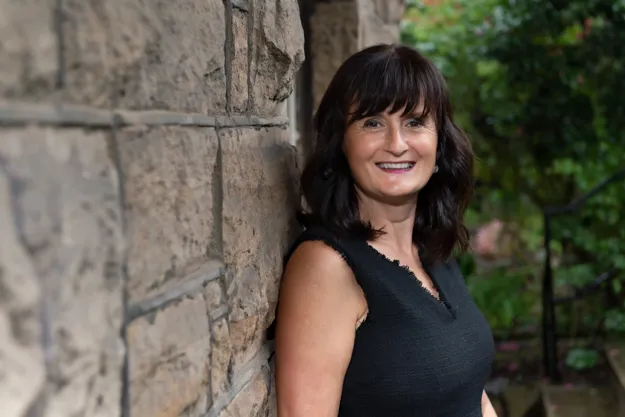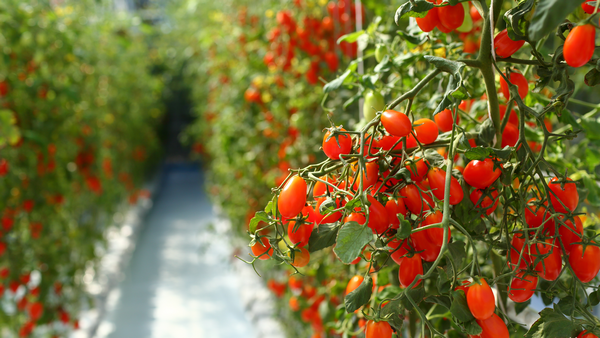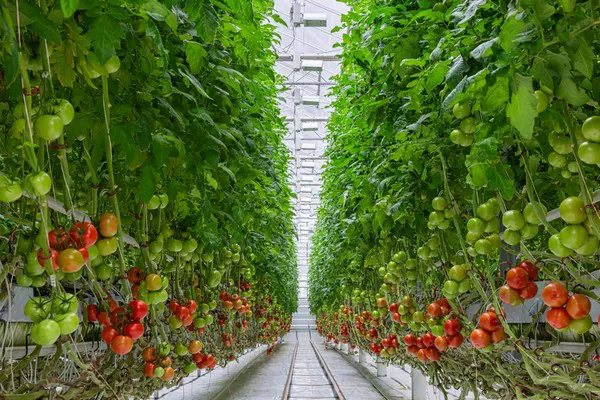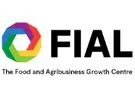Although the Australian-grown brand is renowned globally as a symbol of high quality, there is still a lot of potential in the Australian horticulture industry. To allow growers and the sector as a whole to seize those opportunities, The Food and Agribusiness Growth Centre, trading as FIAL, an industry-led and funded by the Australian Government non-profit organization, is working hard to promote protected cropping in the country. “98% of the businesses we represent are small to medium size,” says Dr. Mirjana Prica, Managing Director of FIAL. “That means that they might not have access to financial resources that would allow them to scale up.”
 Dr. Mirjana Prica, Managing Director of FIAL
Dr. Mirjana Prica, Managing Director of FIAL
A potential to unlock
Currently, agriculture contributes 4% to the gross Australian product, and while raw materials and commodity crops are a big chunk of that, Dr. Prica thinks that the biggest opportunities are in the specialty crops segment. “If you can promote the origin of a crop, ensuring to deliver a premium product, we can differentiate our offering and be smarter with our export.”
According to Dr. Prica, the potential of Australia’s food and agribusiness sector is AU$200 billion. “There are around 19 growth opportunities, including agricultural practices such as protected cropping, which is valued at AU$2 billion,” she explains. “There’s soil water and land management, there’s animal feed, and so on. When we think about this, we have to think about the whole value chain, how we grow raw materials, and how we optimize processed food. By identifying a category, we also create additional jobs, and there’s the potential to add 300,000 of that, generally speaking.”

Bluntly put, many sectors rely on agriculture, its products, and its raw materials. Dr. Prica’s job is to support growers to seize those opportunities that would deliver premium products thanks to protected cropping. “Today, consumers are becoming choosier, and rightfully so,” she says. “People are now willing to pay a higher price if they know that what they are getting is of high quality. They want to eat healthily and stay healthy.”
CEA clusters to drive growth
It thus goes without saying that to achieve that high quality consistently, the best way is through CEA. The issue with that lies in the fact that the entry barrier can be quite high for growers. That’s where FIAL comes into play. “For instance, there’s a new airport going in Western Sydney, and they are looking at putting protected cropping structures close to it.” The rationale behind this is to create clusters where fresh, high-quality food is produced, processed, packaged, and then sent directly to the nearby airport. “This is the kind of project that makes Australian agriculture grow,” Dr. Prica says. “We have been leading the development of clusters – groups of businesses that work together to solve problems, that is. This allows operators in those clusters to more easily access different kinds of technologies. These clusters are really important as they focus on different problems around the country.” The key thing, she indeed points out, is to have one voice, one vision that unites the raw materials and the manufacturers. “Clusters provide that platform.”
The end goal is to be more targeted and efficient in the export. “It’s a supply and demand market, and we can’t approach that with sheer scale,” she says. “We need to be smarter, and we need to do better. The answer is more differentiation, thus getting away from the commodity cycle.”
A case study: tomato grower Flavorite
The tomato grower Flavorite is a great case study to show what Dr. Prica is talking about. The grower wanted to ‘get the taste of tomato back’ when they started their operation back in the 80s. However, the experiments that they were doing often resulted in crop losses.
“They had a problem, and they didn’t know how to solve it. That’s where they saw an opportunity,” Dr. Prica points out. The grower indeed realized that they couldn’t do it on their own, and they needed to collaborate and invest in research. “At the same time, they were also curious and open to exploring. They had a vision, and they were determined,” Dr. Prica adds.
So, the company started using and even developing its own automated system. “They started automating irrigation, using robotics, measuring moisture, humidity, and so on,” she explains. They also invested in the development of their own measuring system, which measures every task business-wide to monitor performance and deliver accurate real-time operational data. The result? “In the past, they used to grow 5kg of tomatoes with around 60-100 liters of water. As of now, they grow 80kg with just 18 liters of water.”

Flavorite shows how collaboration, being open to novelties, as well as investing in research can give a huge boost to a CEA business. Considering the harsh Australian climate, differentiating the offering to better hit the market through CEA-grown products surely represents a huge opportunity for Australian agribusiness. “We have to be smarter about what we grow, produce and manufacture, and we need to structure those resources. This will unlock the AU$2 billion potential of protected cropping in Australia.”
For more information:
The Food and Agribusiness Growth Centre
671 Sneydes Road, Werribee, VIC 3030 Australia
+61 499 016 389
info@fial.com.au
fial.com.au
